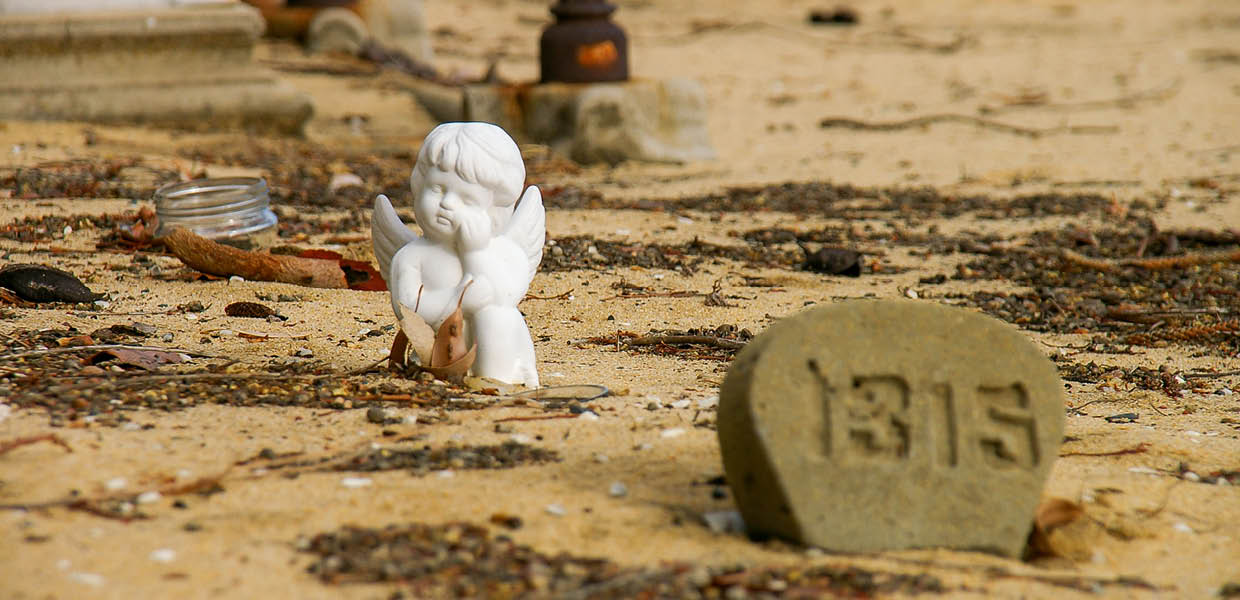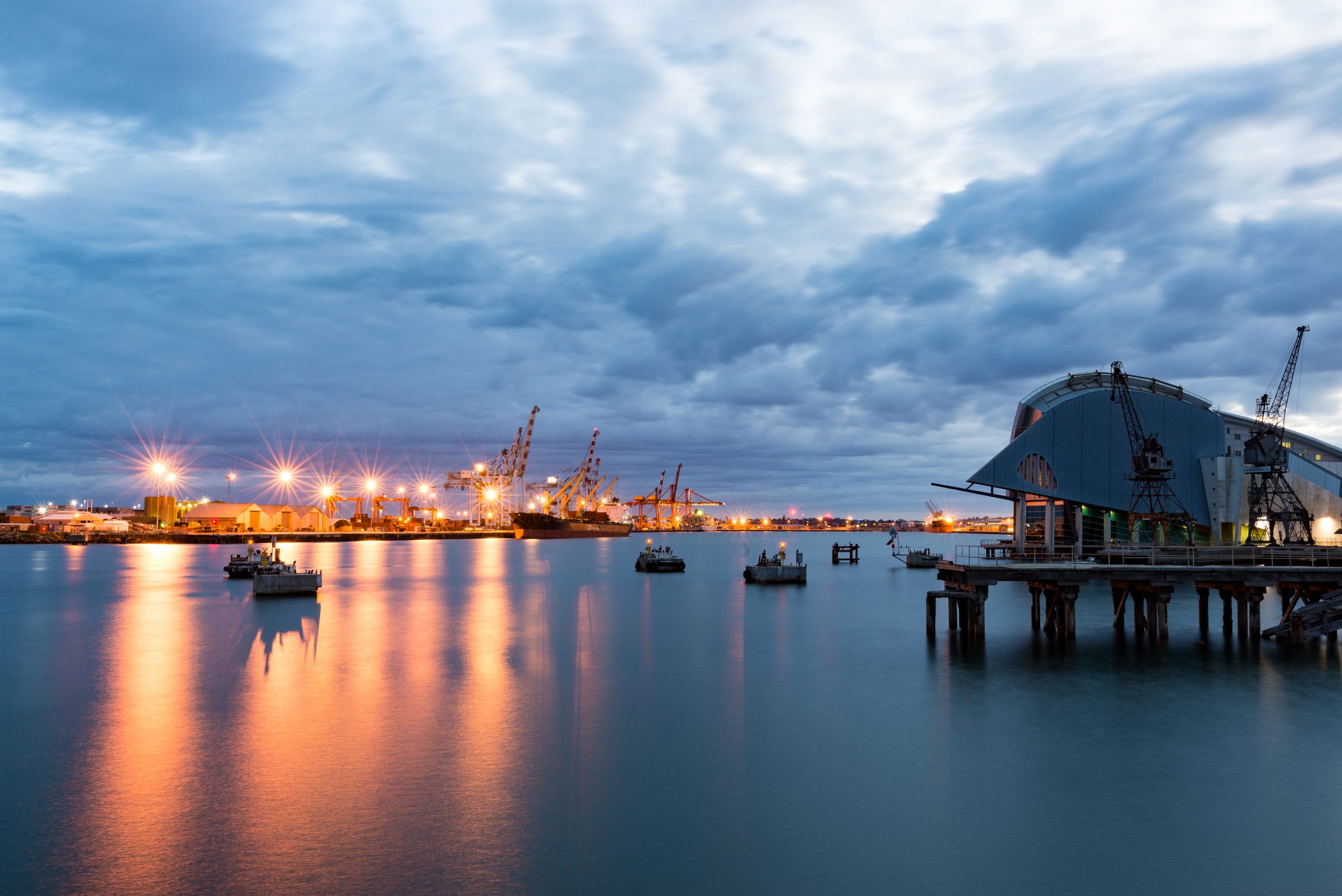WA ‘Jaws’ anniversary
EXCLUSIVE:  THE preserved remains of a 4.3m tiger shark has brought together the US family of its victim and the WA shipwreck author who salvaged the ‘man-eater’ caught at Cottesloe in 1925.
THE preserved remains of a 4.3m tiger shark has brought together the US family of its victim and the WA shipwreck author who salvaged the ‘man-eater’ caught at Cottesloe in 1925.
The family reached out to StreetWise to say it planned to visit WA in 2025 to commemorate the 100th anniversary of the death of Simon Ettelson, 56.
Simon’s great great nephew Jonathan Adolph said he looked forward to coming face to face with the shark that took ‘Uncle Simon’ in front of thousands of horrified beachgoers escaping heatwave conditions on November 22, 1925.
The stuffed head currently is a protected species at Hugh Edwards’ home near where Ettelson was killed by the ‘dear old girl’ captured here in the flesh by Waikiki photographer Leith Phillips.
Adolph told StreetWise his family also wanted to thank the local lifesaving club whose members risked their lives to try and save Simon, the shark Edwards says having left its teeth marks on the small boat used to try and rescue him.
The Massachusetts journalist contacted this author after reading a Freo StreetWise article in which shark expert Edwards discussed beach safety following the death of Paul Millachip, 57, at North Fremantle, on November 6, 2021.
 In the article at www.streetwisemedia.com.au, Edwards, 90, said the only time a shark was caught and killed in WA was at Cottesloe after it attacked and killed Simon, a local bookie well known in WA racing circles.
In the article at www.streetwisemedia.com.au, Edwards, 90, said the only time a shark was caught and killed in WA was at Cottesloe after it attacked and killed Simon, a local bookie well known in WA racing circles.
But it was Edwards’ reference to having in his possession the shark’s remains that snared Adolph’s curiosity.
Simon’s death by shark, the first in Cottesloe’s history, made national headlines and sent ripples through the Perth community which would culminate into shark nets and barriers. The ‘Man-Eater’ was put on public display after police and locals armed with guns and dynamite eventually hooked the tiger with mutton baits.
Informed of the family’s plans, Edwards says he would be delighted to gift Adolph the remains of the shark when he visited WA in 2025.
“I now have even more reason to visit Cottesloe,” Adolph said. “It’s not every day you get offered the head of the shark that killed your great grand-uncle.”
He said he would like to donate the historic head piece to the local lifesaving club as a tribute to the bravery of its members in 1925.
First impressions
ADOLPH and Edwards met for the first time on Zoom, the online ‘face to face’ linked below hosted by StreetWise Media and Silver Key Films (www.silverkeyfilms.com). No surprise any first impressions were distracted by the ‘elephant’ in the chat room.
“It’s aged quite a bit, as I would expect after 100 years,” Adolph observes, the preserved shark head of a female tiger shark standing out against the clutter of Edwards’ adventurous life as diver and author of 40 publications bookmarked by a 2009 Order of Australia for service to Australian maritime history.
 Not surprising, Edwards’ best-selling story of the Batavia mutiny, ‘Islands of Angry Ghosts’, has never been out of print since it was published in 1967.
Not surprising, Edwards’ best-selling story of the Batavia mutiny, ‘Islands of Angry Ghosts’, has never been out of print since it was published in 1967.
“I am really honoured you have taken the time,” Adolph says, separated by the 12-hour time zone difference. “The story of the shark and its 100-year journey, it’s fascinating that it has had its own adventure in the same way that Simon’s story has its twists and turns.”
Edwards said the shark was sent to the WA Museum to be preserved after years of display at the local lifesaving club which raised a huge amount of money for the fledgling Surf Life Saving Association.
“One day the museum called me and said would I like the Cottesloe shark,” Edwards recalls, gladly adopting the shark remains he exhibited for many years at the Perth Royal Show and ‘Shark World’ in Broome.
When British Lord Alistair McAlpine built a tourist resort at Cable Beach, the Shark World ‘props’ including the Cottesloe shark, were retired to a white ant-infested tin shed.
Edwards saved the shark from landfill a second time when the resort manager called him to ask whether he wanted to inherit the rotten remains.
Edwards says out of respect he drove more than 2000km to Broome, loaded the ‘ol’ girl’ on the roof of his 4WD and returned to Perth, “people coming the other way were going off the road, surprised and alarmed to see this shark coming down the road on top of my vehicle”.
Given the state of the dishevelled remains, Edwards salvaged the head including jaws which now sits on a bamboo chair, its fake eyes staring across his writer’s den filled with diver’s helmets, elephant tusks and miniature cannon.
“Do you know how old the shark was at the time of the attack? Was it unusual for its size?” Adolph asks.
“I would think 14, 15 years. It was very big for a tiger shark. What it was doing there and why it picked on poor old (Simon) … we can only guess.”
Noting the recent increase in the number of great whites preying on seals at Cape Cod, Adolph adds: “It’s rare that a shark that has attacked a human is caught, is that correct? It seems it doesn’t happen very often, that’s why this was an unusual case.”
“In the old days,” Edwards explains, “the great white shark, because of its scientific interest, was protected so you weren’t supposed to catch it”.
 In 1925, there were no rules. Kill or be killed, which is what unfolded before thousands of terrified swimmers at Cottesloe.
In 1925, there were no rules. Kill or be killed, which is what unfolded before thousands of terrified swimmers at Cottesloe.
Edwards says the shark attack changed the swimming culture of Cottesloe and wider Perth community and led to, “some of the longest lasting changes in the beach’s history”.
The attack was the catalyst for new lifesaving and beach safety efforts in WA: “We could hardly have imagined what eventuated from what was a very important event. The event involving (Simon) was significant in the beach sports in terms of swimming and surfing, recreation.”
Two years earlier, January 27, Scotch College student Charles Robinson, 13, of Swanbourne, died after he was bitten by a shark near Peppermint Grove, the first in the history of the Swan River.
The Mayor of Claremont ordered the posting of warning notices and a reward of five pounds, “for the capture of a shark capable of having caused the injuries”. The attacks resonated in the community for years.
Year 11 student Stella Berry, 16, was killed by a shark near the old traffic bridge in North Fremantle on February 4 this year. A few days later, two fishermen caught a 3m bull shark off the East Fremantle boat ramp just one kilometre upstream from where Stella was attacked.
Having designed a shark-proof ocean pool at Cottesloe in 2017, Stella died from leg injuries, her death the first fatal shark attack in the Swan in 100 years.
The Truth in 1926 reported, “the shark tragedy at Cottesloe last season had a far-reaching influence, and timid people now resolutely refuse to bathe except in either baths or a shark-proof netting enclosure”.
 Edwards told Adolph to avoid another attack state authorities replaced the then only jetty at Cottesloe with a groyne and several pylons to protect the beach with shark-proof nets: “Baths were established at Crawley, Claremont, Nedlands and Bicton. A 3000 pound shark net system, a huge amount of money for the time, was installed at Cottesloe, scene of the Ettelson tragedy. The pylon was the anchor point for the nets.”
Edwards told Adolph to avoid another attack state authorities replaced the then only jetty at Cottesloe with a groyne and several pylons to protect the beach with shark-proof nets: “Baths were established at Crawley, Claremont, Nedlands and Bicton. A 3000 pound shark net system, a huge amount of money for the time, was installed at Cottesloe, scene of the Ettelson tragedy. The pylon was the anchor point for the nets.”
“Cottesloe was the major point for people coming to swim from Fremantle and Perth,” Edwards said, adding it remained a recreational beach for many years. Predictably, the enclosures including pylons and nets succumbed to rough seas and violent storms.
Today, only ‘Cottesloe pylon’ remains, with few people alive to remember the tragic event responsible for its construction. Edwards describes the popular swimming feature as a, “wave-battered monument to Ettelson”, a reminder to swimmers and surfers of the tragic event in 1925.
Finding ‘Simon’
ADOLPH says the process of getting to know Uncle Simon, including talking to Edwards and those who have helped his research into his distant relative, has helped him better understand the times and places he lived in and significance of what happened at Cottesloe.
“He’s a mystery to me in many ways,” he told StreetWise. “All the relatives I did know in my life they had never met him. He’s a figure who really just exists in newspaper clippings.”
He said his research into Simon followed the passing of his great aunt Grace Levinson, who was the daughter of Simon’s sister Etta.
“She left me her family papers and photographs, including a yellowed newspaper account of Simon’s death and funeral. Grace never married and had no heirs.”
Simon’s parents Asher and Agnes were married in Lithuania in 1862. Their first child Dora was born two years later.
Simon was born on January 28, 1869, when the family fled eastern Europe and found refuge in Glasgow, Scotland.
In 1870, baby Simon, a British citizen, with his parents and six-year-old Dora sailed to and settled in Syracuse, New York, where his four younger sisters were born.
 Simon or ‘Simie’ Ettelson as he signed his letters was in his early 20s when he moved to Melbourne to find fortune in Australia.
Simon or ‘Simie’ Ettelson as he signed his letters was in his early 20s when he moved to Melbourne to find fortune in Australia.
According to The Sunday Times published a week after his death, Simon “opened up as a general dealer” or hardware store owner when he arrived in Melbourne.
Lured by the rush of the WA goldfields, he moved west in 1892 and, “started business in the travelling drapery and general store line”.
The Times notes ‘Simmy’ bought at auction, “the half acre block on the corner of Maritana and Hannan streets, which he sold for a ridiculously cheap sum”.
Adolph said lease documents show Simon also invested in gold mines: “He made a fortune and he lost a fortune.”
He said Simon took up bookmaking in Perth by the turn of the 20th century. He never married and boarded at the Metropole Hotel from 1901 until his death at Cottesloe.
Granted his bookie’s licence in 1902, Simon was described as, “one of the best known of the sporting fraternity in Perth”.
In his letters to his family in the US, Simon also discusses mostly personal matters, his parents having died a month apart in 1917.
Adolph says Simon followed Jewish tradition after the death of his parents, saying the Kaddish: “Another article noted he lit candles for them. So I would say he was as observant as could be expected for his circumstances.”
Simon writes at some point he wanted to return to the US, discusses his business interests and describes efforts to raise money for persecuted Jews in Russia and believes WW1 will end soon with America’s entry in the war.
He writes: “The Jewish people of Perth are working hard to send a large sum of money to our coreligionists in Russia. What a terrible time they are having. The only thing the Russian army has done up to the present is suffer defeat.”
Adolph said, “These are very interesting historical details”, his ongoing research including reaching out to the Jewish community in WA for records of Simon’s activities in Perth and WA’s goldfields.
Reports of Simon’s passing were not entirely flattering: “Agreeable at times, he was at others extremely taciturn and surrounded himself with a reserve that few of his friends cared to try and break down, and those who did not know him were always sorry when they tried to. But deep below the surface of a stolid and, at times, ironically sarcastic character was an earnestness and generosity of purpose that would amaze all who did not really know him.”
“Simon,” Adolph says, “must have had a big heart to send money back to his family in the US. The more I learn, the more questions I have.”
 Adolph has a small portrait of Simon in his office to remind him in 2025 it will be 100 years since his distant uncle died swimming at his favourite beach on the other side of the world.
Adolph has a small portrait of Simon in his office to remind him in 2025 it will be 100 years since his distant uncle died swimming at his favourite beach on the other side of the world.
Simon was buried at the Orthodox Jewish section at Karrakatta cemetery: “The large attendance at his funeral of business and professional men as well as the leading members of Tattersall’s Club and the sporty community generally amply testified to the esteem in which the deceased was held.”
Another report, ‘The Last Rites’, states Simon, “was accorded all that could be given to a well-loved stranger in a strange land”. And when Simon was committed to mother earth, “there were around the grave representatives of almost every walk and sphere in the land of his adoption”.
Moments of horror
 NOVEMBER 22, 1925, was a stinker. The beach at Cottesloe is packed with thousands of people including local bookie Simon Ettelson who was, “floating on his back, about 30m from shore, dressed in a dark neck-to-knee swimming costume”. Then the attack.
NOVEMBER 22, 1925, was a stinker. The beach at Cottesloe is packed with thousands of people including local bookie Simon Ettelson who was, “floating on his back, about 30m from shore, dressed in a dark neck-to-knee swimming costume”. Then the attack.
Edwards describes the terrifying scene in ‘Shark: The Shadow Below’, when a 4.3m female tiger repeatedly charged the Scottish-born US migrant, “tearing most of the flesh from his upper leg. The water around him was red with blood”.
Swimmers tried to fight off the shark, which also turned on Cottesloe Life Saving Club rescuers in a small dinghy who fought back with oars and floorboards, “the force of the charge lifted the bow right out of the water, and left teeth embedded in the timber”.
Edwards writes as the rescuers lifted Simon into the dinghy, “the shark swirled again and with one tremendous bite ripped out his entire right side so that his entrails fell into the water”.
The West Australian also reported the next day: “The speed of those in the dinghy was remarkable, not three minutes elapsing from the time when the boat was run down the beach to when it reached the injured man. Had the dinghy not been available the injured man would undoubtedly have disappeared … they dashed into the water and commenced to swim to the man, regardless of the danger of being bitten by the monster, which could still be seen swimming about.”
It added: “At times the fearsome body of the great fish could be seen almost entirely out of the water and its tail, as it lashed out fiercely, inflicted slight injuries to the legs of members of the club who were in the boat.”
Badly mauled Simon was barely alive, his last words, “Oh my God!”.
A doctor from Fremantle Hospital reached Simon within minutes, but it was too late. Some bystanders fainted. And by now, everyone was on the beach watching terrified at the shark in the shallows, “lashing the water with its tail”.
When the shark came within metres of shore, the local constabulary fired into the water.
With a 200 pound reward on its head, the shark was finally hooked after a half-hour struggle by local police constable Dan Hunt and Fremantle fisherman V Maiolini.
It would be 75 years before another attack shook the local community when Ken Crew on November 6, 2000, was killed by a 4.3m great white near the, ‘wave-battered monument to Ettelson’.
Copyright StreetWise Media 2023




